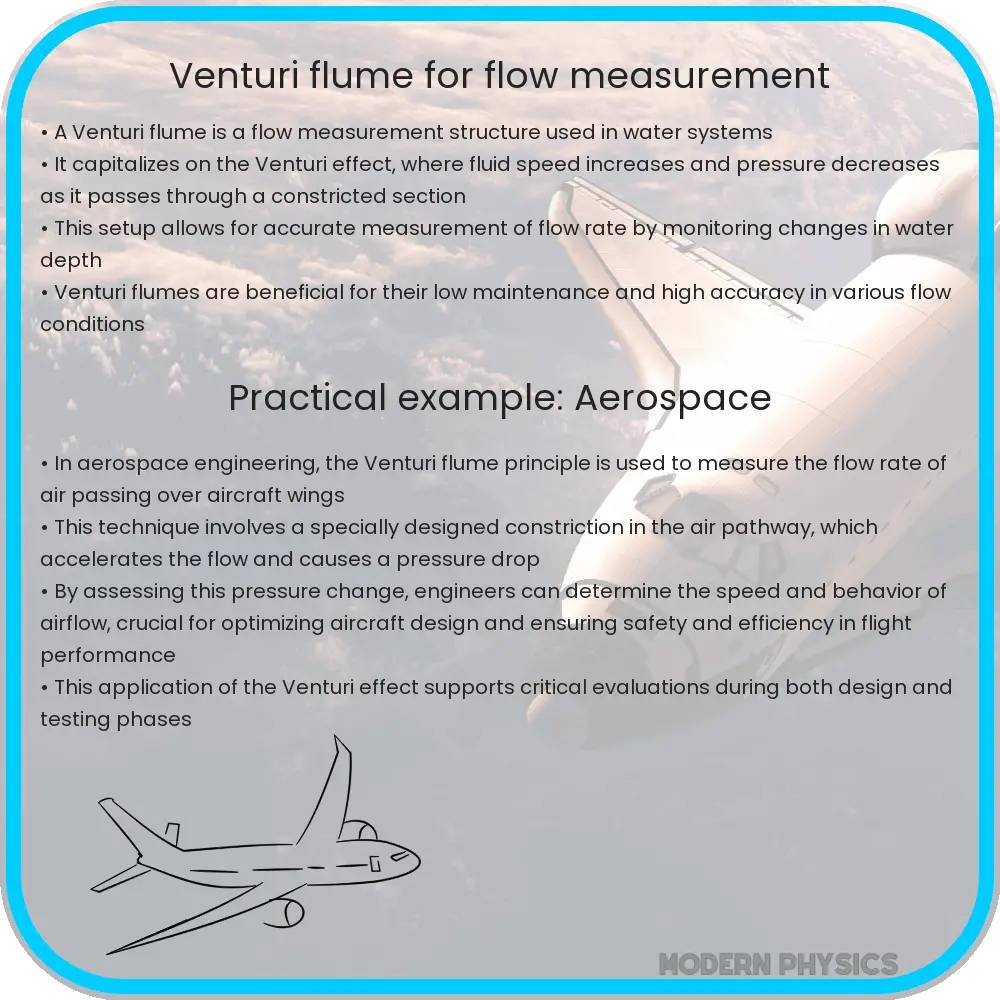Explore the Venturi Flume, a versatile tool for precise flow measurement in industries, agriculture, and environmental monitoring.

Venturi Flume: An Overview
The Venturi Flume stands as a paradigm of precision and versatility in fluid flow measurement. Developed from the principles of the Venturi effect, it is a critical instrument in various industrial and environmental applications. This article delves into its design, functionality, and the diverse scenarios where it proves indispensable.
Design and Principle
At its core, a Venturi Flume is a specially shaped, open channel flow meter. The design includes a converging section where the flow narrows, a throat section—the narrowest part, and a diverging section where the flow expands. This structure is inspired by the Venturi effect, a phenomenon where fluid flow velocity increases as it passes through a constricted section, resulting in a corresponding decrease in static pressure.
The measurement of flow rate through a Venturi Flume is achieved by observing the change in fluid height. As the fluid enters the converging section, its velocity increases, causing the fluid level to drop at the throat, and then rise again in the diverging section. The difference in fluid height between the upstream level and the level at the throat is proportional to the flow rate, which can be accurately calculated using Bernoulli’s equation:
\[ Q = C \times A \times \sqrt{2g(H_1 – H_2)} \]
Here, Q is the flow rate, C is the coefficient of discharge, A is the cross-sectional area of the throat, g is the acceleration due to gravity, and H_1 and H_2 are the fluid heights at the upstream and throat sections, respectively.
Applications
Venturi Flumes are extensively used in a variety of settings. One of the primary applications is in water treatment facilities, where they aid in regulating and monitoring the flow of wastewater. They are also vital in agricultural practices for irrigation management, ensuring efficient water usage. In hydrological studies, Venturi Flumes assist in river and stream gauging, providing valuable data for environmental monitoring and flood forecasting.
Furthermore, their application extends to industrial processes, particularly in chemical and food industries, where precise flow measurement is crucial. The Venturi Flume’s ability to handle a wide range of flow rates and its adaptability to different fluid types make it a versatile tool in these sectors.
Accuracy and Efficiency
The Venturi Flume’s design ensures high accuracy in flow measurement, making it a preferred choice in many industries. Its unique shape minimizes energy loss and maintains a steady flow, enabling precise readings. This accuracy is especially crucial in processes where even minor discrepancies in flow rate can lead to significant issues, such as in chemical mixing or environmental monitoring.
Additionally, Venturi Flumes are known for their efficiency. They require minimal maintenance and are less prone to clogging and sediment buildup compared to other flow measurement devices. This efficiency translates into lower operational costs and reduced downtime, benefiting industries where continuous operation is essential.
Versatility and Adaptability
One of the most notable features of the Venturi Flume is its versatility. It can be used across a wide range of flow conditions and in various fluid types, including clean water, wastewater, and even slurry flows. Its design can be adapted to different channel sizes and shapes, making it suitable for both small-scale applications and large industrial processes.
The adaptability of the Venturi Flume extends to its installation and usage as well. It can be easily integrated into existing channel systems without the need for extensive modifications. This ease of integration, combined with its low sensitivity to upstream and downstream conditions, makes it a flexible and user-friendly solution for flow measurement challenges.
Environmental Impact and Sustainability
Environmental sustainability is another significant aspect of the Venturi Flume. By enabling precise water management in agricultural and industrial processes, it contributes to water conservation efforts. Its role in monitoring and controlling wastewater flows also aids in protecting aquatic ecosystems from pollution and overexploitation.
In conclusion, the Venturi Flume is a remarkable tool that embodies accuracy, efficiency, and versatility in flow measurement. Its design, based on fundamental fluid dynamics principles, ensures reliable performance across various applications. From environmental monitoring to industrial process control, the Venturi Flume plays a crucial role in ensuring sustainable and efficient water usage. Its adaptability and ease of integration make it an invaluable asset in contemporary water management practices, highlighting its importance in an increasingly water-conscious world.
